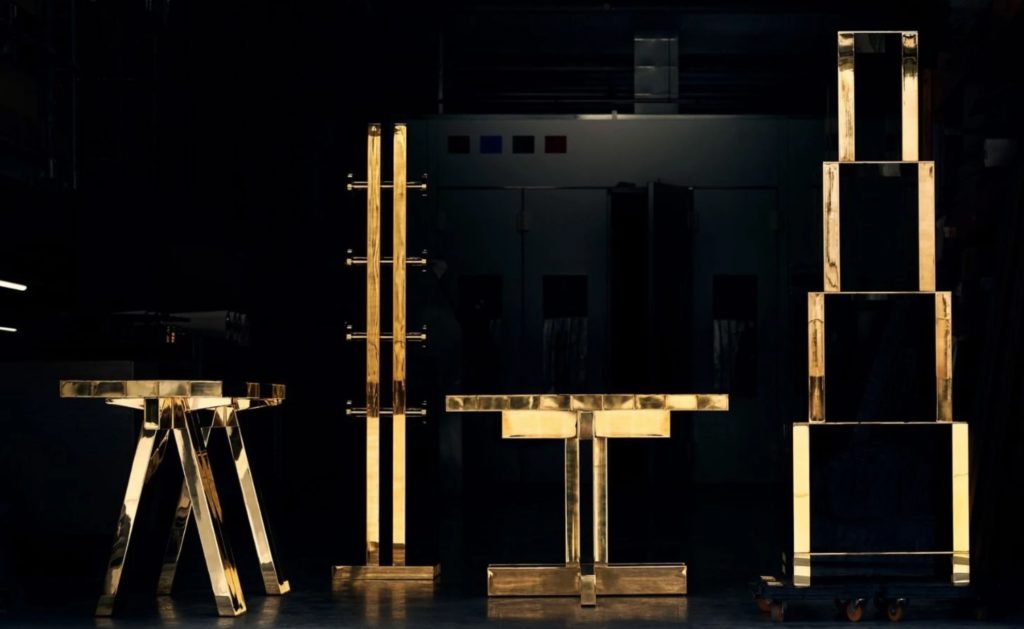
Betting On Brass
“Brass is back!” I may be paraphrasing, as well as speaking hyperbolically, yet brass has been pinpointed as an “on-trend” trend throughout 2021.
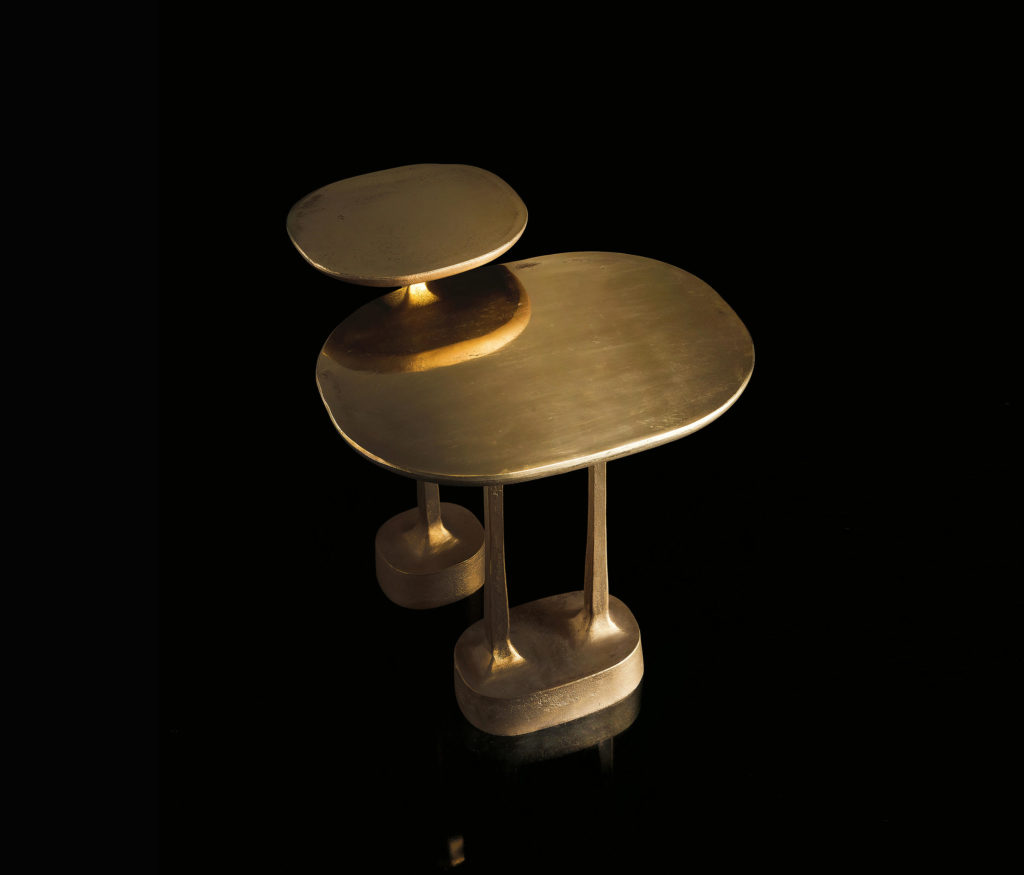
Henge Mushroom Coffee Tables
Although it’s arguable whether or not brass ever really went out of favor, apropos of its “re-emergence” this year, the truth is that brass as front-and-center décor remains an occasional phenomena.
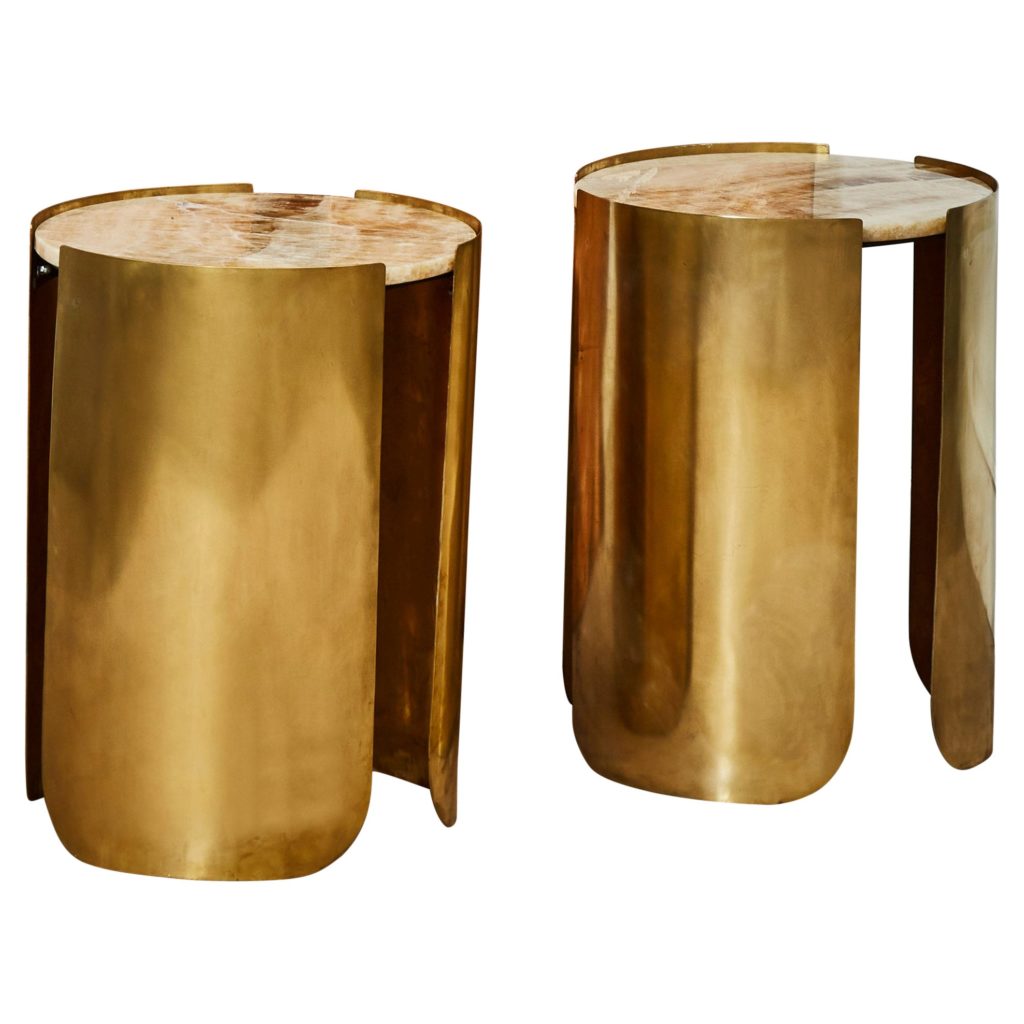
Round Pedestal Tables with Brass Sheath, by Studio Glustin
Mostly, we see brass in accents and highlights, kitchen taps and shower mixers, the occasional inlay in flooring or wall panels for a signature pop that sets off more commonplace materials like steel, tile, or wood.
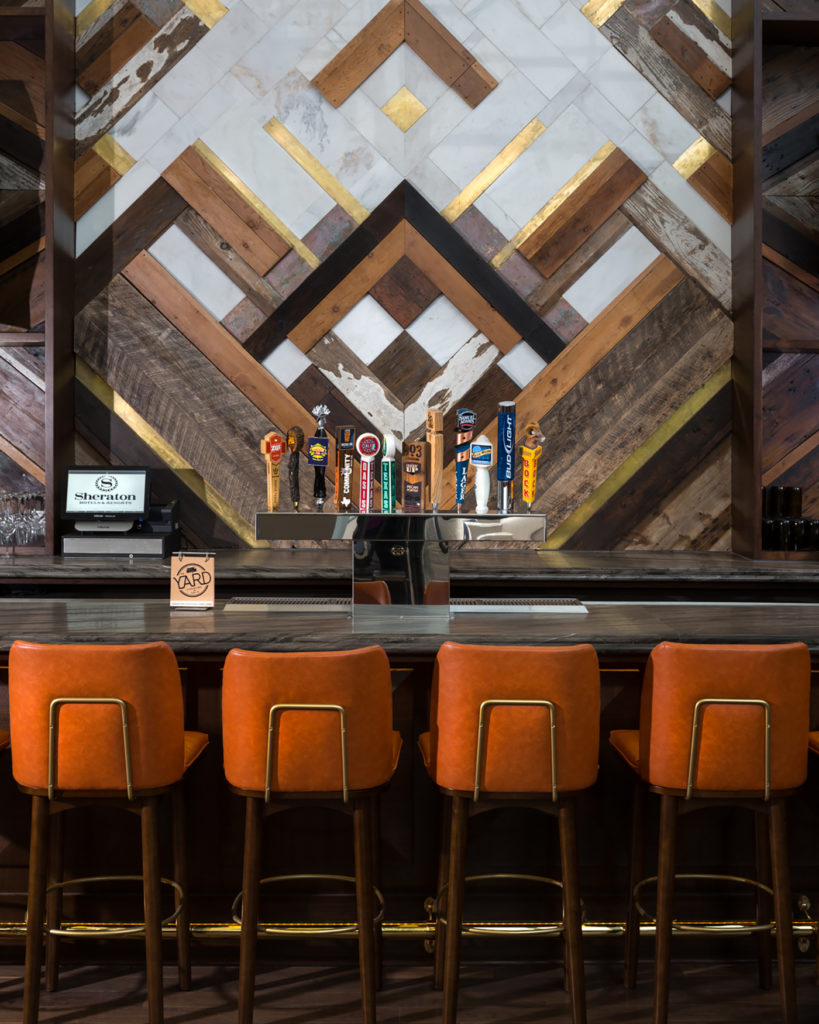
Brass Accents on Wall Panel Above Bar, via Plan n Design
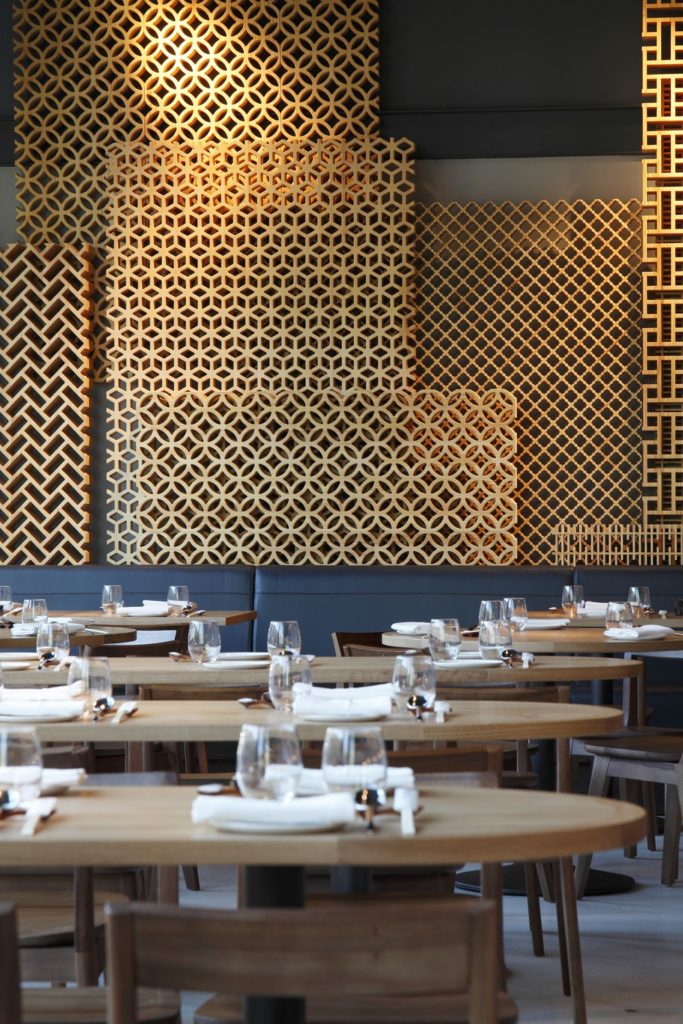
Brass Wall Art in New Orleans Restaurant. Pretty cool, but would you want it in your house?
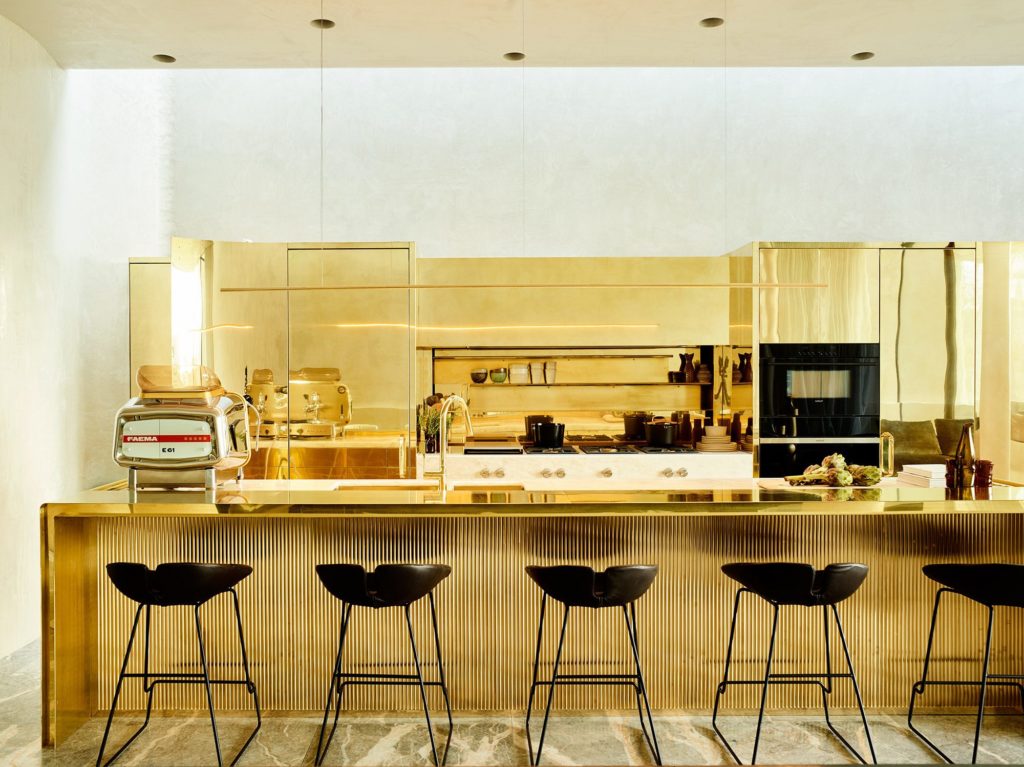
Brass Kitchen by Rob Mills Architecture. Very shiny.
For the Full Monty, so to speak, when it comes to brass, we should of course look to Tom Dixon, maestro of materials and connoisseur of the recondite.
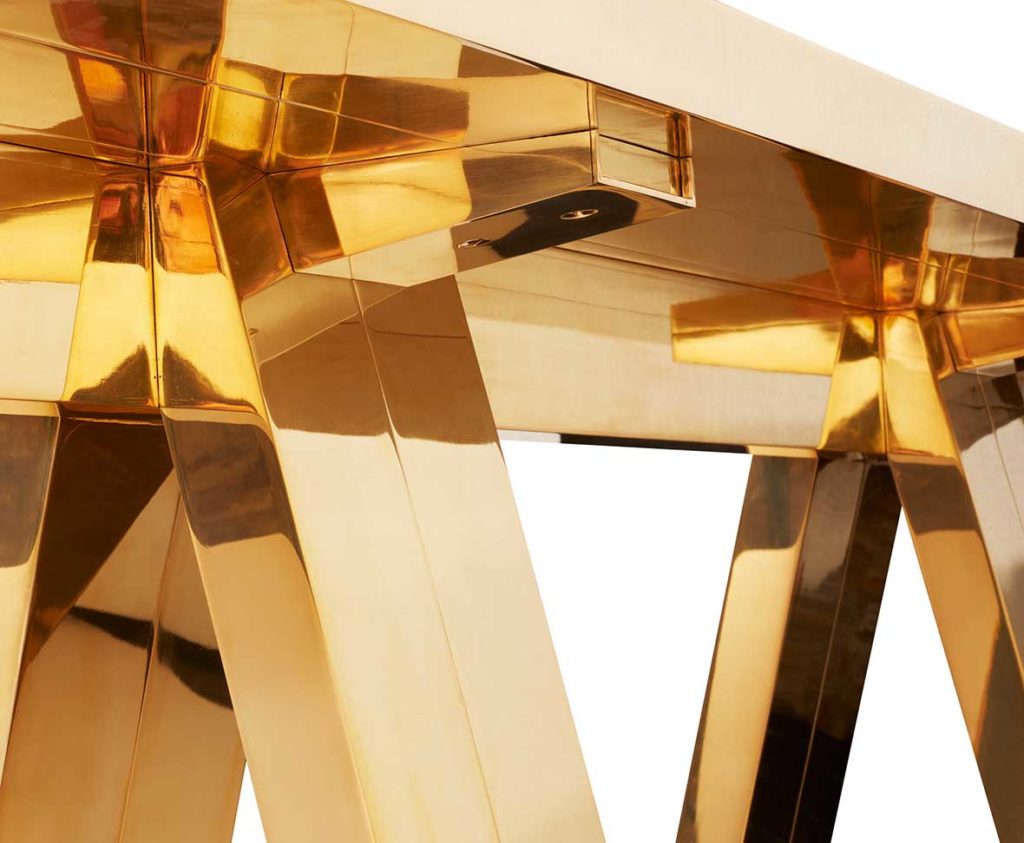
Detail of Tom Dixon’s Mass Table
Dixon has been working with brass for a while. His oeuvre contains tables, lights, tea kettles, diffusers, plates, jugs, baskets, and other accessories.
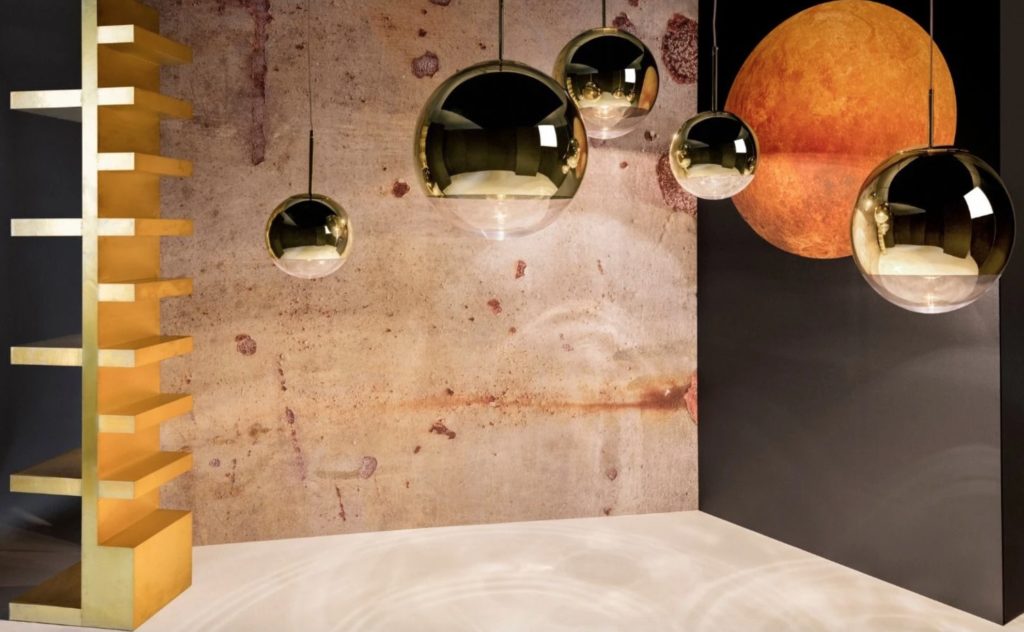
Tom Dixon Mirror Ball Pendant in Brass
But I’d argue that he didn’t really become interested in the potential of the material until the last year or so, because the truth of brass in design is that it’s mostly used as a finish layer, for plating or painting, or even just as an adjective that actually means “paint that looks like gold.”
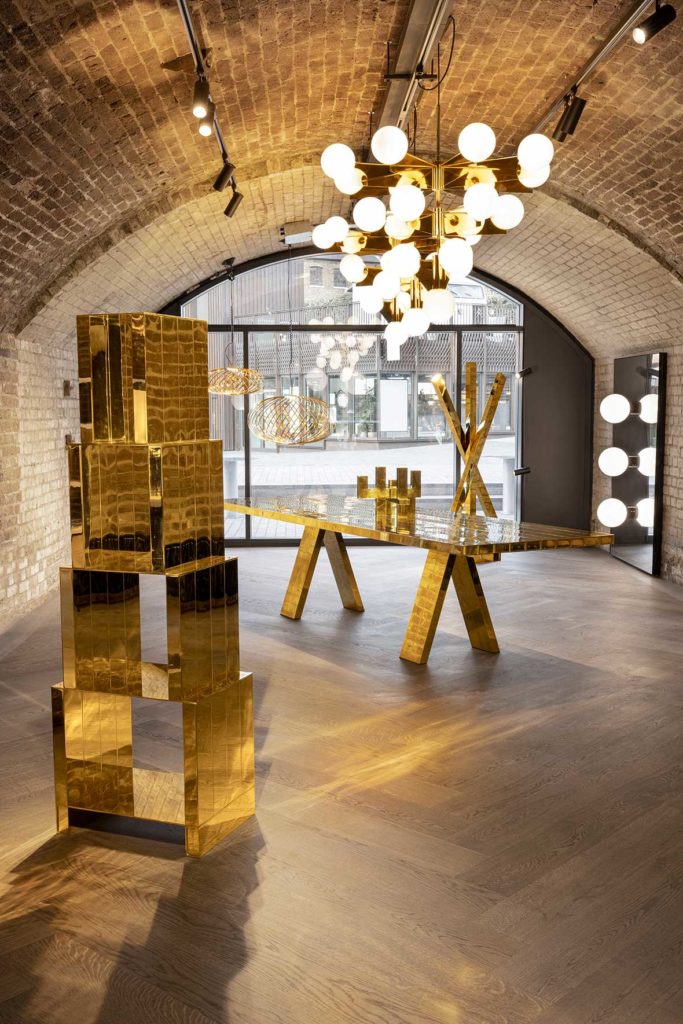
The Mass Collection includes a very weighty dining table and a bookcase that looks like Miami’s Freedom Tower.
Brass is an alloy. It’s made by amalgamating copper and zinc. The more zinc, the lighter it appears. But there’s a balance to be struck here because an excess of zinc results in an alloy that’s more difficult to form and offers less resistance to corrosion.
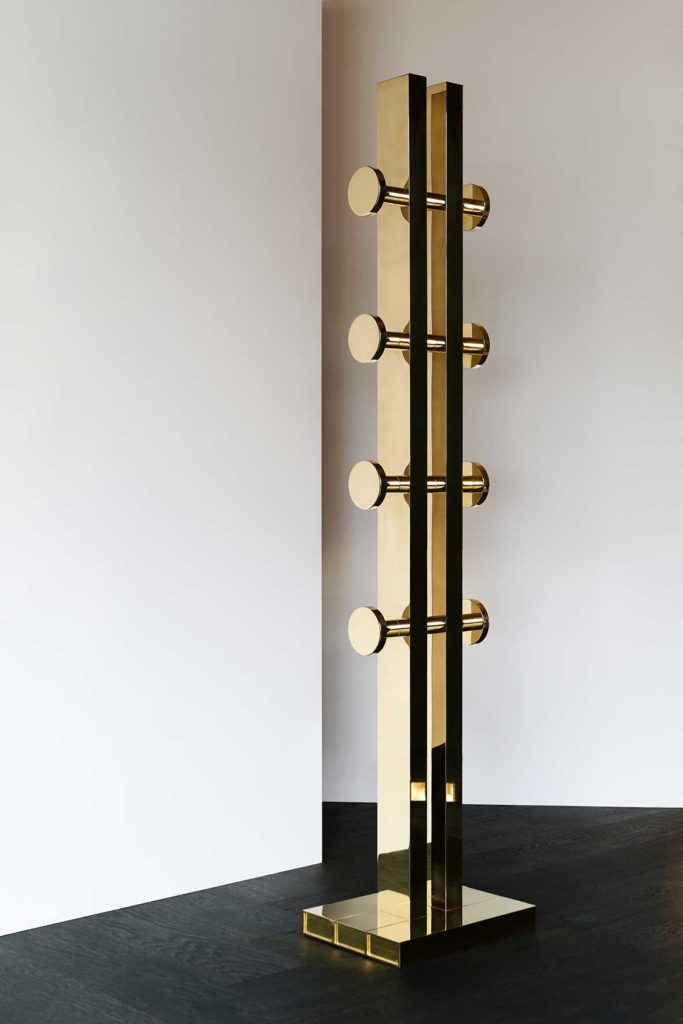
Coat Rack from the Mass Collection. A rich amber with a subtle hint of red.
Dixon’s Mass is different from most brass because it’s actually brass. These are solid pieces of structural brass (hence, the table’s $39,000 price tag) that propose an entirely new use for the material: brass as building block.
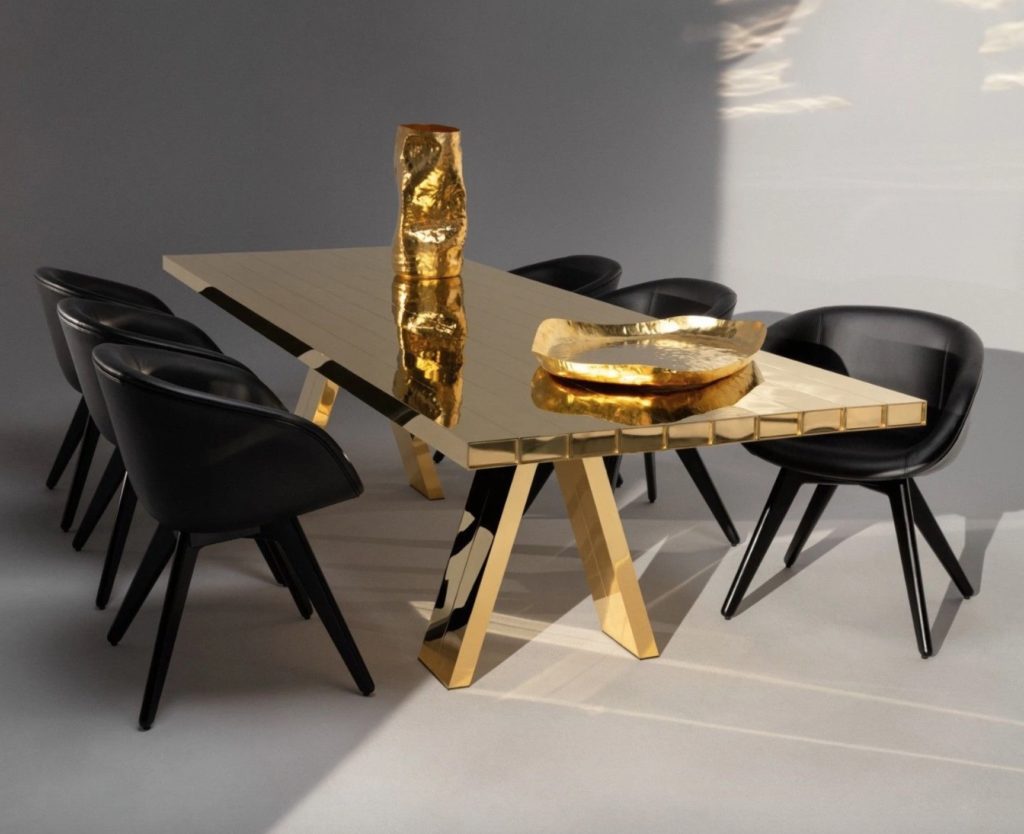
The above images illustrate the concept. The pieces in the collection are made of brass planks—tubular structures that effectively work like wood. The individual modules are welded together to create a piece that’s 100% brass. As seen above, the material lends itself to elemental forms: a simple flat slab and classic triangular structure for support.
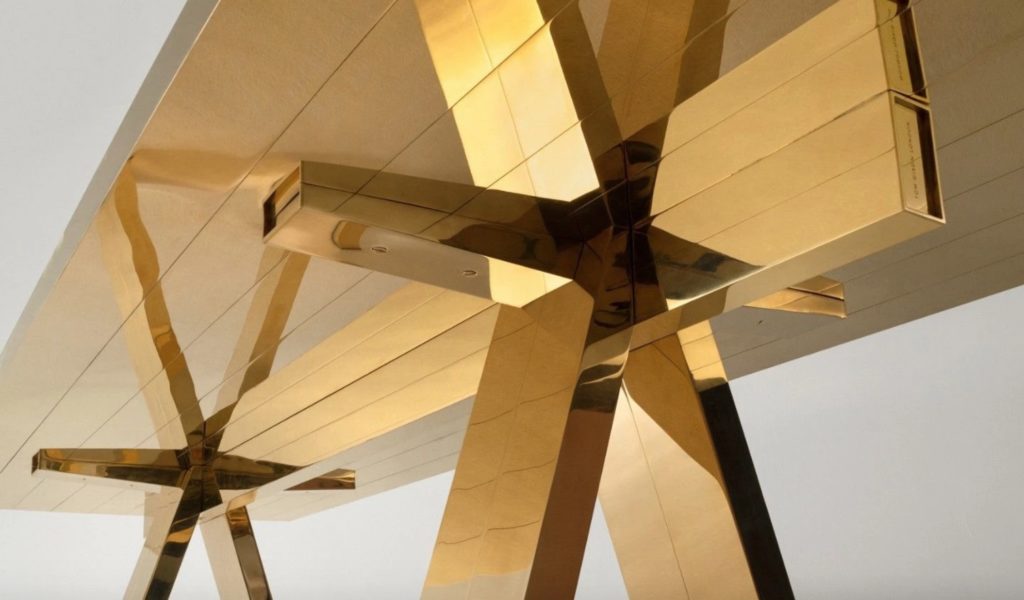
From this angle, the brass building blocks look like gold bars.
The concept is propitious not only for what Dixon has already made of it but for what it can become. Beyond a fixed collection, he envisions solid brass as a building block for the future, a new material that can be specified as custom elements for customized projects: “The rectangular tube is used in a multitude of configurations and will eventually be presented as a made to measure construction set, with a series of predetermined junctions that allow architects and interior designers the liberty to construct their own Mass artefact.”
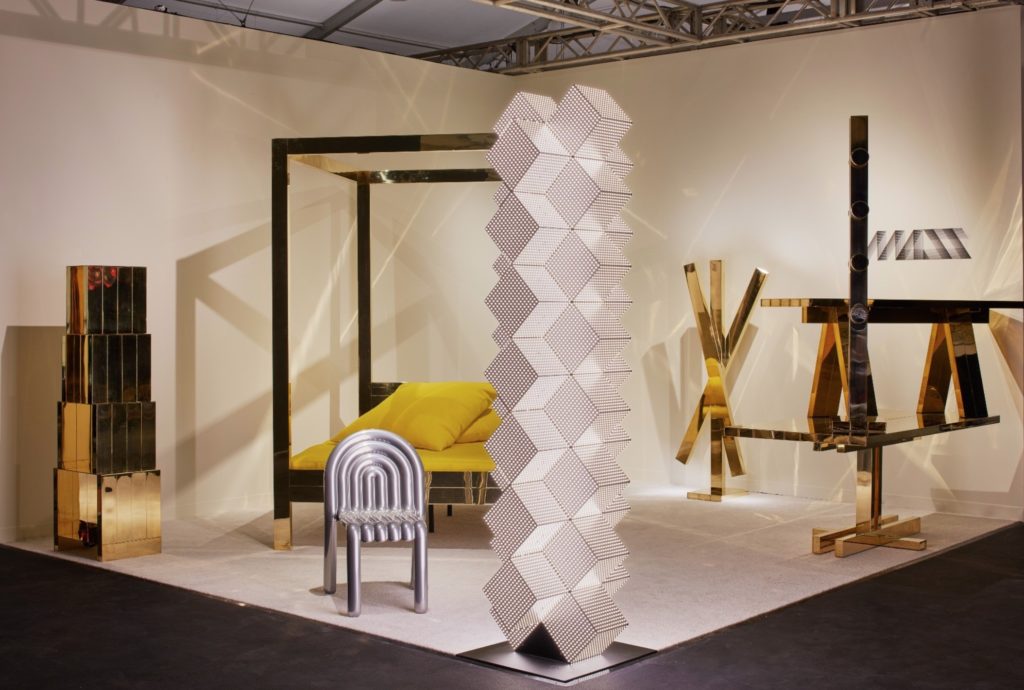
Mass 2.0 table, Mass 2.0 bookshelf, and Mass 4-poster bed from Tom Dixon’s booth at Design Miami.
Will the brass plank replace the humble 2×4? Will we soon be specifying custom builds with brass walls? I kid, but this very cool concept does beg to be analyzed from a cost/benefit perspective. Is the technology sustainable? Will it transcend the art/design milieu into which it was born? Just who has the wherewithal to build with brass?

Begin your explorations into the future of the brass plank as unit of construction at Tom Dixon.
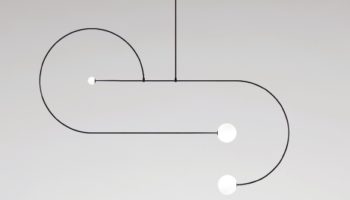
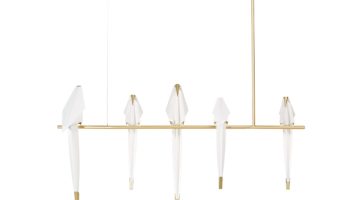
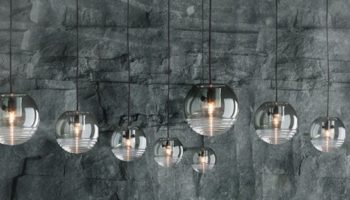

Leave a Reply